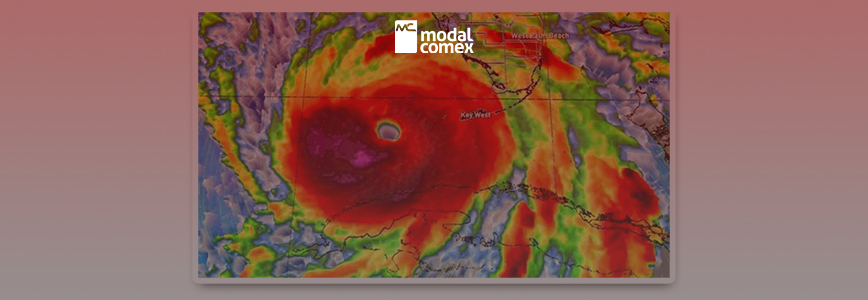Hurricane Ian gains strength, causes deaths and destruction.

Hurricane Ian made landfall in Florida’s Cayo Costa Island at 3:05 PM yesterday (4:05 PM in Brasília), bringing with it winds of 240 km/h. One of the most powerful hurricanes ever recorded in the United States, Ian struck as a Category 4 storm on the Saffir-Simpson scale, which ranges up to Category 5. The hurricane caused water levels to rise by up to 5 meters, leading to widespread flooding that submerged homes and cars, swept away boats, and trapped residents. Over one million homes were left without power.
“We are underwater. Our house is flooded. Fortunately, the power went out before. The dogs are on the sink, and I’m on the counter,” a resident of Fort Myers, on Florida’s west coast, shared in a help-seeking group on Facebook. “This is by far the worst storm I’ve ever seen,” admitted Kevin Anderson, the mayor of the city.
Catastrophic Impact and Response
According to the National Hurricane Center (NHC), Ian is “hitting the Florida Peninsula with catastrophic storm surges, winds, and flooding.” Ken Graham, Director of the National Weather Service (NWS), stated, “This is a storm we will be talking about for many years.” Florida Governor Ron DeSantis discussed federal assistance with President Joe Biden, emphasizing the severity of the situation. “It is a big storm,” DeSantis said. “Clearly, it is a very powerful hurricane with far-reaching consequences.” By nightfall, Ian had weakened slightly to a Category 3 hurricane.
Evacuations and Emergency Measures
Hours before Ian’s arrival, ten counties had issued evacuation orders affecting 2.5 million residents. Florida authorities mobilized over 42,000 linemen, 7,000 National Guard members, 179 aircraft, and amphibious vehicles.
In Naples, firefighters were seen in waist-deep water conducting rescue operations. The Coast Guard reported that a boat carrying 27 Cuban migrants sank near Key West, with four people managing to swim ashore and being rescued. At the time of this report, 23 migrants were still missing.
Unusual and Alarming Scenes
Hurricane Ian produced some eerie and alarming scenes. In Tampa Bay, the storm effectively “sucked” the water away. In Fort Myers, a resident filmed a shark swimming down a flooded highway. In St. Petersburg, near Tampa Bay, botanical garden staff housed over ten flamingos in a restroom for safety.
Journalists from the news agency France-Presse reported that the streets of Punta Gorda, in southern Florida, emptied rapidly yesterday afternoon as the sky darkened and rains intensified. When Ian was 40 km from the city, winds were snapping palm branches and shaking power poles.
Widespread Concern
The anxiety extended even to those living on Florida’s east coast, far from Ian’s direct impact. Ludmilla Vieira Costa Campos, a 39-year-old lawyer from Goiás, Brazil, has lived in Hallandale since 2019. “This is the second time I’ve experienced a hurricane. The first was Dorian in August and September 2019. Since the start of the week, I’ve been following the news to understand the potential damage we could face,” she told Correio. “We’re four hours from Tampa, and the forecasts here predict common storm damage such as fallen trees, rising tides, and flooding in some coastal areas.”
According to Ludmilla, some Hallandale residents chose to stock up on food and water, which became scarce in local markets. “We made sure to remove all furniture from the balcony as the winds are expected to pick up speed as the hurricane approaches,” she noted.
Destruction in Cuba
Hurricane Ian also left a trail of destruction in Cuba, causing flooding and leaving millions without electricity. After an 18-hour blackout, power slowly began to return as the country’s electrical system, overwhelmed by the storm, started to recover. Two deaths were reported. “It’s back!” residents of Old Havana shouted as they rushed to check on food stored in their freezers. Similar scenes played out in Central Havana, another district of the capital, home to 2.1 million people.
Conclusion
Hurricane Ian’s devastation in both Florida and Cuba underscores the immense power of natural disasters and the importance of preparedness and swift response. The storm’s impact will be felt for years to come as communities rebuild and recover from the extensive damage.


